
At-home cardio workouts can be easier and more fun than you think – especially if you have a jump rope.
Aside from offering a plethora of benefits such as improving coordination, increasing bone density and muscle tone and even increasing brain activity due to the dynamic nature and shifting of weight of the jump rope – you can have a fun and challenging workout at the same time.
So to start, here is a guide to help you get started on your jump rope fitness journey.
First, let’s talk about getting a rope. There are different types of jump ropes to choose from, each with specific benefits. Although buying a jump rope can seem overwhelming due to the differences between styles, think about your experience level or the workout you plan on doing. Are you a beginner who is new to exercise? Are you an experienced athlete looking for something to spice up your routine? Or are you looking for a durable rope built to last?
Let’s go over some jump rope types based on their purposes and go over their advantages and disadvantages.
Jump Rope Types
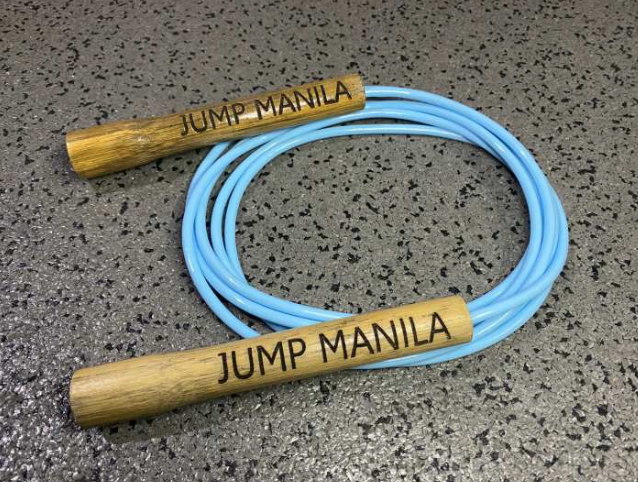
STANDARD
These are the most popular ropes on the market, with prices ranging from P150-P600 depending on the brand. These ropes are simple and straightforward and are manufactured out of PVC/plastic, and with the differences in design usually with rope thickness, finishes and colors.
PVC ropes are built with simplicity in mind. They are readily available in most sporting goods stores, they are affordable and they offer the greatest ease of use amongst all the other types of ropes – the weight is almost always consistent across brands and are also easily adjustable for your height.
If you are just starting out jump rope and are interested in learning the fundamentals, I would absolutely recommend a standard rope, as this offers unmatched versatility for different rope exercises – I guarantee intermediate to advanced jump rope athletes have this rope in their collection.
RELATED ARTICLE: Where to buy jumping ropes in PH?
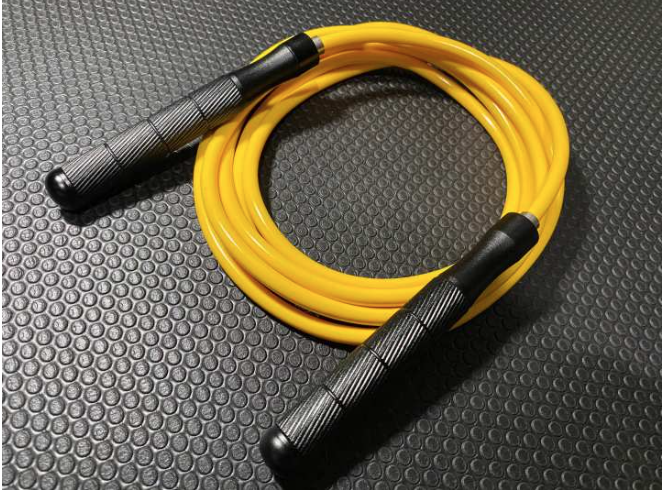
WEIGHTED
Weighted ropes are built with a thicker rope made of PVC with a width of 6mm and above and a ball bearing system built into the handles to allow for smoother rotations, as the added weight of the rope has increased friction which may translate to unstable rope movements.
These ropes are a bit harder to find than your standard ropes, although as skipping becomes more and more popular, more sellers are starting to pick up on the need of jumpers to add training variability and provide more options.
The purpose of weighted ropes is for strength and conditioning in conjunction with the cardio aspect of jumping. Using a rope with additional weight requires more physical exertion and energy expenditure, as controlling the added resistance adds significant amounts of stress to the arms, shoulders and core musculature. Advanced jumpers prefer these ropes based on my experience, but a little know trick is that it is great for beginners too. As a beginner, the focus is on proper timing and form, so a weighted rope gives additional feedback to the body. Also, as the rotations are slower because of the weight, the learner has more time process these movements and translate them into proper timing, and are fully aware of which muscles are working.
If you a beginner having difficulty learning basic jumps with a standard rope, give this rope a try. If you are an advanced user looking for an additional challenge or looking to increase muscle tone, this rope is for you!
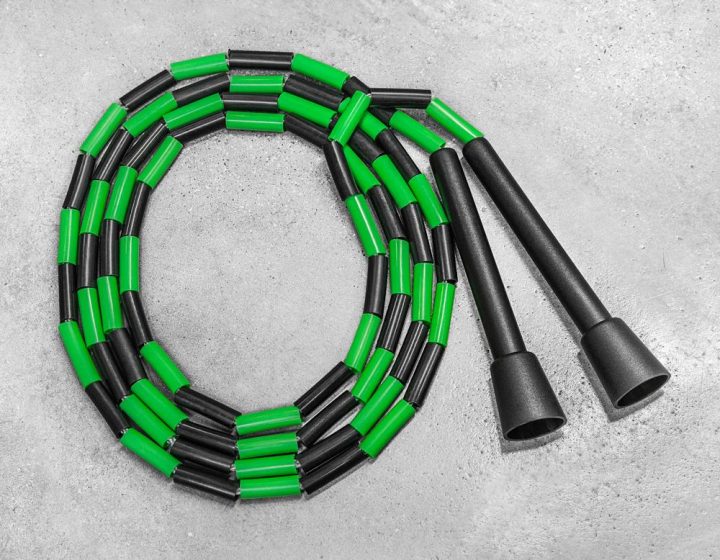
BEADED
Putting together a show of customizable colors and patterns, beaded ropes are a great sight to see someone use. Made from shatter-proof plastic, these are one of the most durable ropes second only to leather. Housed inside the plastic beads is a string, and the size of the beads makes it less prone to tangles.
Beaded ropes offer a good balance of ease of use and adaptability, as the increased air resistance of the rope through the air makes it move slower, which makes it easier to control when learning tricks such as mic releases – the weight also makes cardio moves like Double Unders extra challenging as well. Many pro jumpers use them for competitions and exhibitions.
This rope is adaptable to beginners and advanced users. For beginners, the sound the beads make on the ground helps the learner tune in to the rhythm and pattern of the jump, which helps with retention of the learned movement, and the added weight also provides easier timing for jumps. For advanced users, showcasing talents with a multicolor display paired with big moves makes beaded ropes another must have.
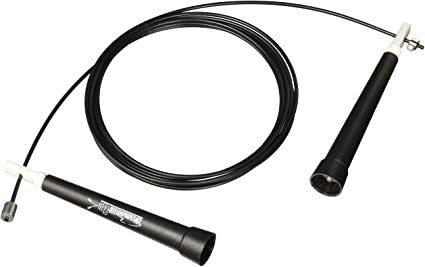
SPEED
Speed ropes are build for one thing – speed. The construction of a speed rope is designed with the purpose of it being lightweight and fast – materials range from cables to thin vinyl, and are less durable than the other rope types in the lineup.
Since speed ropes are light, they produce significantly less muscle fatigue, making single moves like basic hops or straight Double Unders easier to perform in regards to speed or duration of the activity. The downside of this rope is that mistakes in your routines can be painful and costly since the rope is thin and if it hits you, it is concentrated to a much smaller surface area of your body.
I would definitely not recommend a speed rope for a beginner, as it requires great amounts of concentration and timing. If you are an athlete or an experienced user, such as one who does CrossFit or workouts where you have to get a high number of repetitions in a short amount of time, this suits that purpose.
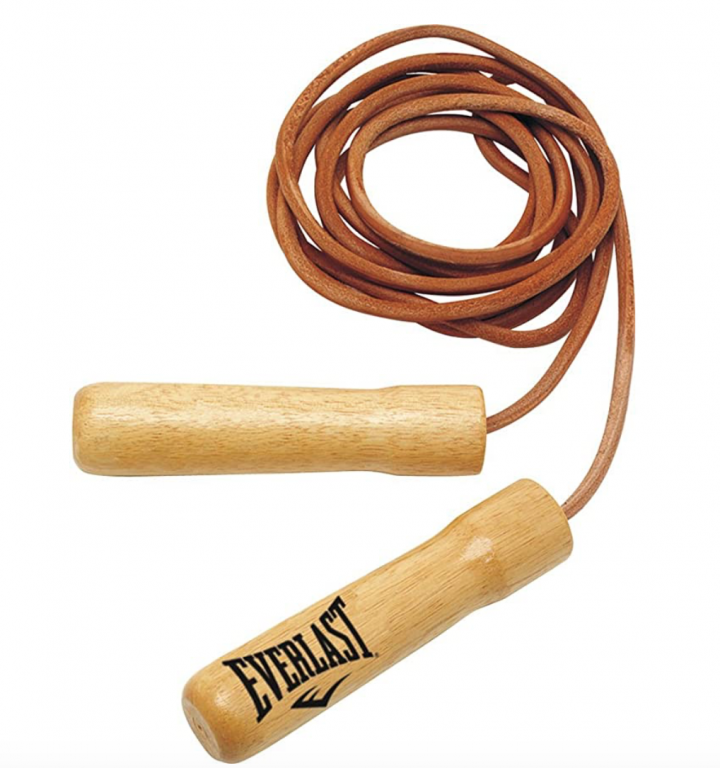
LEATHER
Leather ropes are the most premium of the ropes out there. Although costly because of its increased durability and build quality, they offer a good balance of speed and weight and are certainly more quiet than the other ropes in this lineup. However, due to its organic nature, one must be careful with the storage of this rope as leaving it unattended exposed to the elements may cause mold and bacteria to grow on it, affecting its durability.
Popular amongst pro athletes and boxers, the weight of leather ropes varies. Useful for enhancing muscle tone, speed and at the same time increasing cardiorespiratory capacity for exercise, these ropes are best used for those looking for a straightforward, demanding workout.
Other Accessories
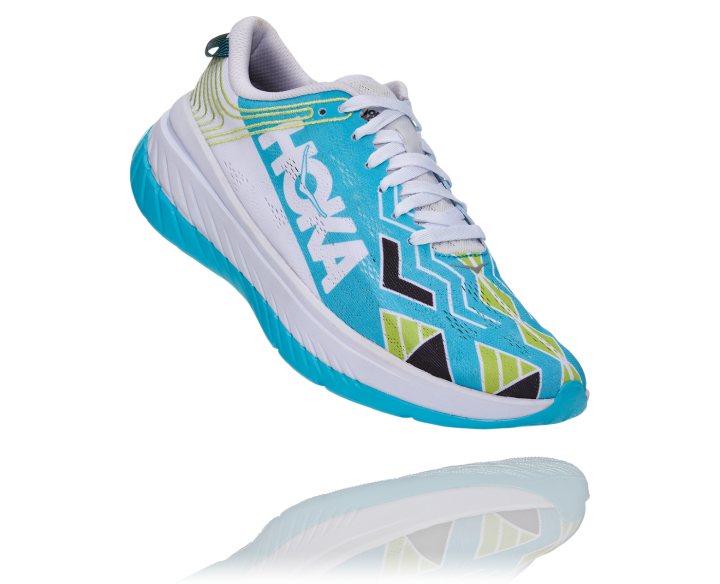
SHOES
Now that we’re done talking about which rope is best for you, let’s now move on to another important aspect of jump rope – footwear.
Although jump rope is a relatively low impact exercise, there are some important considerations to take into account when searching for the right shoe. Although there is no “perfect” jump rope shoe. Choosing the footwear is important because not only will wearing the right shoes will provide you comfort and help prevent injury. Wrong shoes can make it harder for you to maintain a routine as well as make you more susceptible to injuries such as shin splints.
When jumping, there is increased stress and compression on the knees, ankles and spine – especially when performing prolonged exercise. With the right footwear, these factors are minimized, which will lead to a positive feedback cycle – you can train longer, harder and faster. As we jump, we bounce on the balls of our feet, and this requires flexibility of the sole – this allows for our calves and thighs to contract and elongate to provide the necessary force for that rebound.
It is therefore better to use sneakers with a soft elastic sole with a secure fit that anchors your feet – this helps reduce shock to the lower extremities and distribute force to spare our tendons and ligaments of the potential damage. Shoes adapted for running tend to be flexible and have great traction and shock absorbing qualities similar to the requirements of jump rope.
Aside from comfort and build, another crucial factor when choosing footwear is the weight of the shoe. Jumping is a total body coordination and cardio exercise and will benefit from a lightweight shoe that is not too bulky and heavy.
Last but not the least, good shoes should amplify your jump experience, and it never hurt anyone to make sure you jump with style! Check out your local stores and make sure you pick a shoe with a good balance of flexibility, cushioning and comfort.
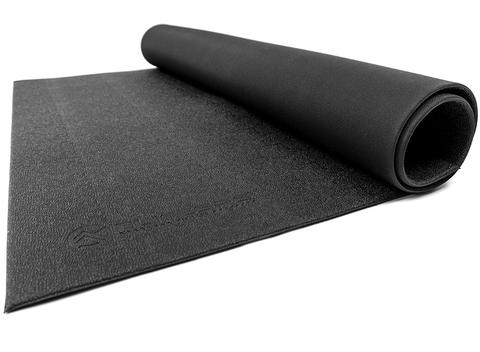
GEAR
One of the great things about jumping rope is that you don’t need a lot of space to get into it, and the movement tool is easy and accessible to acquire. All you need is a rope, an area with enough overhead clearance and a dose of patience.
When talking about jump rope gear, the only thing that comes to mind that provides actual benefit is a skip mat.
Skip mats are made of high grade, abrasion resistant rubber and come with the purpose of preserving the durability of your rope by acting as a barrier between rough surfaces, as well as providing some additional cushioning for those jumps.
For the beginner just starting jump rope, this is not an essential item as basic hops are only performed with minimal ground clearance. Advanced jumpers may benefit from a skip mat as some routines require jumps with high ground clearance, and the additional force from performing high-force movements may cause premature wear and tear of the ropes being used.
The only downside to buying a skip mat is its portability as these may have quite a heft, and are not ideal to carry around to whatever jump spot you choose.
ADDITIONAL TIPS
Getting into jump rope may seem exhausting or challenging at first, especially if your inspiration for starting was seeing flashy moves and complicated tricks from the jump rope pros.
Always remember – everyone starts off as a beginner. Those flashy tricks are only one piece of the jump rope pie – a fun, challenging exercise that could be done anywhere and anytime with minimal gear, and which comes with multiple health benefits at that.
Starting any journey will entail challenges at the start, I guarantee it – but if it doesn’t challenge you, it won’t change you.
So grab that rope, stick your feet in those shoes, and let’s go along on this journey together. Good luck!






